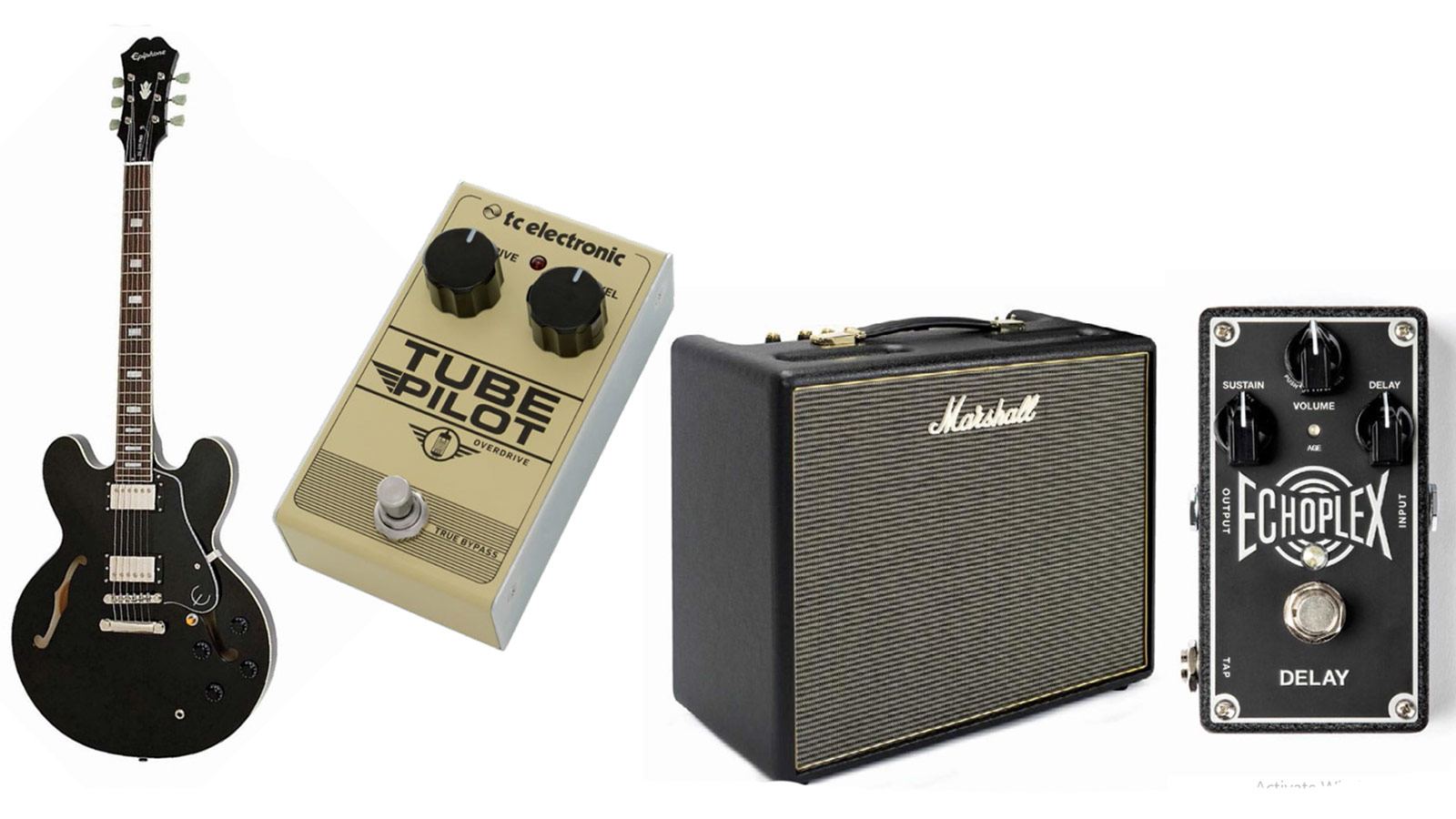The secrets behind Eric Johnson's tone on Cliffs of Dover
Learn how to get the instrumental icon's legendary guitar sound

Before the release of Ah Via Musicom in 1990, Eric Johnson had a small but dedicated cult following that discovered him via his club performances in his hometown of Austin, Texas, his appearance on the PBS showcase Austin City Limits, his 1986 Guitar Player magazine cover story on his debut album Tones or bootleg live cassettes that were circulated by electric guitar fans.
Ah Via Musicom catapulted Johnson to guitar-hero stardom, achieving certified Gold and Platinum sales. A crucial element of the album’s success was the instrumental track Cliffs of Dover, which combined an infectious, lilting Celtic-inspired melody that appealed to general music fans with dazzling, blazing runs and a sweet, violin-like tone that impressed fans of technical guitar playing.
Throughout most of Johnson’s career, he has used a sophisticated rig that consists of three different amp and effects setups for clean rhythm, dirty rhythm and lead tones. For Cliffs of Dover, he used his lead setup exclusively, which is dialed in to provide a sweet, sustaining tone with a smooth, non-percussive attack resembling the sound of a bowed violin.
This studio rig was relatively simple, mainly employing a Maestro EP-3 Echoplex, Paul C.’s/Chandler Tube Driver and a 100-watt Marshall half stack. Johnson used two different guitars in the studio while recording the song: an early-'60s Gibson ES-335 for most of the song and a 1954 Stratocaster used for 25 seconds of the intro (before the rhythm section joins in) and for the first 10 seconds of the solo starting around 2:45.
Several details are crucial for generating Johnson’s violin-like tone, including turning the amp’s presence and treble controls all the way down, using a Y-cable to access both channels turned all the way up and dialing in the Tube Driver (still made today by B.K. Butler and highly recommended), so its gain provides smooth compression without overly distorted sizzle.
Johnson’s 'bounce' picking technique, where he brushes upstrokes on the strings instead of plucking them, is also a key element of his smooth, violin-like tone that minimizes the percussive attack.
Placing the Echoplex in the signal chain between the guitar and the Tube Driver causes the delay/echo effects to only be prominent on more sparse and percussive parts and 'duck' or sound more like reverb when playing faster and more aggressive lines.
Get The Pick Newsletter
All the latest guitar news, interviews, lessons, reviews, deals and more, direct to your inbox!
Get the sound, cheap!
- Epiphone Limited Edition ES-335 PRO
- Marshall Origin 20C
- Dunlop Echoplex Delay
- TC Electronic Tube Pilot overdrive

TONE TIP: Start with the Marshall’s Tilt control at '5' to simulate using both Marshall channels at once, and dial to the left if you desire more warmth. If you can afford it, adding a Dunlop Echoplex Preamp will get you even closer to Johnson’s violin-like warmth and sustain.
Original gear
GUITAR: 1963 Gibson ES-335 (bridge pickup setting), volume: 10, tone: 8; 1954 Fender Stratocaster with DiMarzio HS-2 bridge pickup (bridge pickup setting), volume: 10, bridge/middle tone: 7 (Note: Johnson’s Strat wiring was modified with a tone control connected to the bridge and middle pickups instead of only the middle pickup)
AMP: 1969 Marshall Model 1959 Super Lead 100-watt head (Presence: 0, Bass: 4, Middle: 2.5, Treble: 0, Volume I: 10, Volume II: 10; Y-cable connected to top input jacks on channels I and II), Marshall 4x12 wired at 8 ohms loaded with 8-ohm Celestion G12-80 speakers
EFFECTS: Maestro Echoplex EP-3 (Echo setting, Sustain: 3, Volume: 1.5, Delay: 24 on a scale of 0-35); Paul C.’s/Chandler Tube Driver (Output Level: 3.5, Hi EQ: 0, Lo EQ: 0, Tube Drive: 4)
STRINGS/TUNING: GHS Nickel Rockers .010, .013, .017, .026, .036, .046/standard
PICK: Dunlop Jazz III red
Chris is the co-author of Eruption - Conversations with Eddie Van Halen. He is a 40-year music industry veteran who started at Boardwalk Entertainment (Joan Jett, Night Ranger) and Roland US before becoming a guitar journalist in 1991. He has interviewed more than 600 artists, written more than 1,400 product reviews and contributed to Jeff Beck’s Beck 01: Hot Rods and Rock & Roll and Eric Clapton’s Six String Stories.










